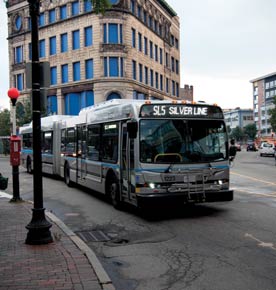The Targeted Turnout Strategy
In an off-year election like April 2010, the electorate tends to be whiter and higher income compared to in a presidential year. This means that voters are less inclined to support either public transit or a tax increase. There are enough supporters of transit to win in an off-year election; the challenge is how to turn them out without increasing turnout among opponents. The steering committee addressed this with a targeted turnout strategy.
The strategy had two basic components: targeted media buys and a grassroots get out the vote campaign. In the failed November 2008 campaign, the newly formed Transit Alliance had waited for the Civic Progress–funded consultants to give the Alliance “a job.” This time, there was no waiting; they took ownership immediately.
The “vote yes” campaign also targeted cable TV advertising to zip codes in St. Louis County that were served by light rail and historically had voted for transit taxes, while avoiding advertising in large swaths of the county with thin transit service to avoid stirring up opposition among anti-tax groups in those areas. After controlling for age, race, and income, as well as other campaigns in the same election, a statistical analysis we conducted at the University of Missouri–St. Louis for the campaign concluded that turnout among infrequent voters in the zip codes targeted by the media buys increased from 13 percent to 20 percent.
Still, research on turnout shows that labor-intensive face-to-face communication is more effective than mass media at stimulating voter participation. This is what the Greater St. Louis Transit Alliance did. Volunteers made phone calls, hung leaflets on targeted doors, and spoke to voters in churches and union halls. A phone bank operation led by Nancy Cross, vice president of SEIU Local 1, contacted almost 20,000 households with registered voters who were likely supporters of public transit. We found the phone bank boosted the turnout rate of infrequent voters from 19 percent to 29 percent.
Prop A passed with 63 percent of the vote. Overall, we estimated that the targeted turnout strategy increased turnout among traditional transit supporters by roughly 18,000 votes, about half the margin of victory. The other half was due to a shift in public opinion toward transit, fostered by the educational campaign.
Lessons for Transit Activists
With cuts in federal and state funding for public transit on the horizon, local initiatives to support public transit will be crucial. Transit tax initiatives need to go beyond checkbook campaigns to broad civic coalitions. In retrospect, the unwillingness of Civic Progress to initially support the transit tax was a godsend. Knowing that they could not wait for “Civic Progress to do it,” civic groups stepped into the vacuum themselves, bringing an energy and élan than made the intensive, targeted GOTV drive successful.




Comments